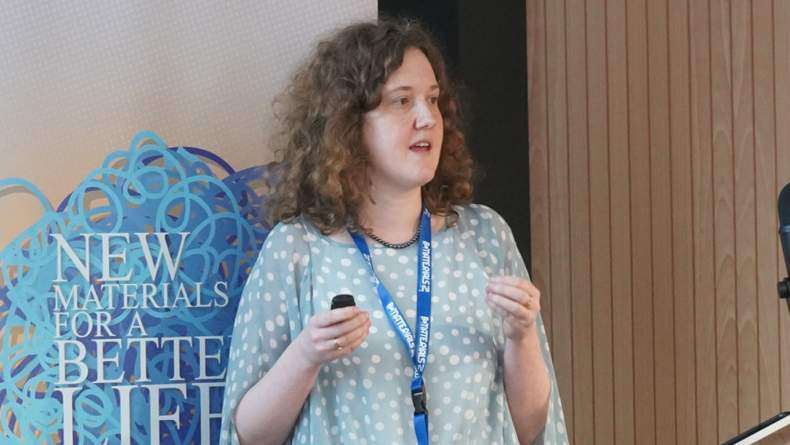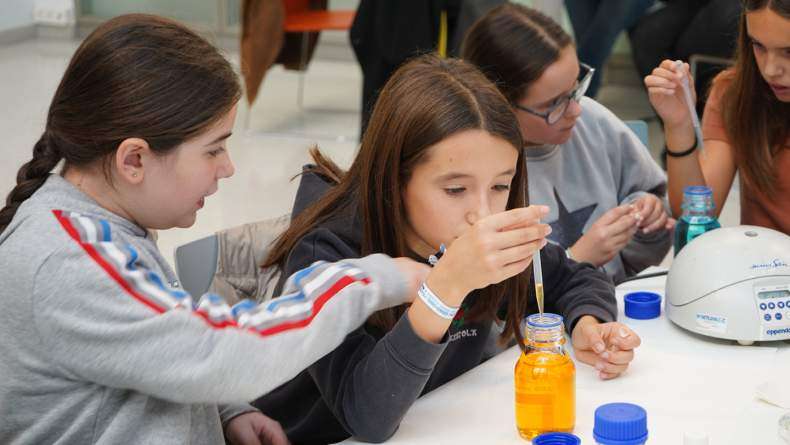PhD Results #5

MIKEL RINCÓN
(BCMATERIALS)
Magnetic inks based on water-soluble cellulose derivatives for Screen-printing
Although magnetic materials are currently being used in a plethora of applications, their fabrication approaches often involve expensive, non-scalable, time-consuming and often toxic processes. Here we report a scalable and environmentally-benign fabrication of free-standing magnetic films and screen printing ink based on cellulose derivatives through the combination of cobalt ferrite (CoFe2O4) nanoparticles with methyl cellulose (MC), hydroxypropyl cellulose (HPC) and sodium carboxymethyl cellulose (NaCMC). Crack-free films with homogeneously dispersed nanoparticles having concentrations up to 50 wt.% are fabricated by doctor blade casting. Besides, the same materials have been used as screen printing ink using mechanically flexible microporous paper as substrates. Vibrating-sample magnetometer (VSM) results demonstrate that fabricated patterns present enough magnetization to be used as actuators and sensors.
BRUNO HERMENEGILDO
(BCMATERIALS)
Hybrid fibrous microenvironments for muscle tissue engineering
To mimic the natural environment of tissues, in-vitro, support structures are necessary in order to allow for healthy cell and tissue development. Hydrogels have become popular materials to develop these structures due to their many attractive properties; however, hydrogels alone cannot provide all the necessary stimuli and microenvironmental needs for cell development. Likewise, most hydrogels are fragile and not suitable for any load-bearing applications, or any others that cause high mechanical stress on materials.
Incorporating micro and nanoscale electroactive polymers in a hydrogel scaffold, and stimulating these polymers externally so that they can in turn stimulate the incorporated cells, allows for in-vitro mimicry of the normal conditions of muscle cell growth and differentiation, as well as mechanical reinforcement of the existing hydrogel. In this context, the present work focuses on the development of electrospun electroactive polymer fibers, further modified with ionic liquids or magnetoelectric particles to allow electro and mechanical stimuli to be applied to the cells, for future fabrication of a functionalized hybrid hydrogel scaffolds for muscle tissue engineering.Related news
Charla invitada con Karolina Milowska (6 de noviembre)
Nuestro programa de charlas científicas invitadas sumará una nueva cita el próximo 6 de noviembre, con la visita de la investigadora Ikerbasque Research Fellow en CIC nanoGUNE Karolina Milowska. La...‘BeZientzia’: 200 escolares se convierten en científicos/as por un día
Los días 28 y 29 de octubre tuvo lugar en Bilbao la feria científica ‘BeZientzia’, un evento en el que participaron cerca de 200 estudiantes de 6º de Primaria, procedentes de colegios de Bizkaia....BCMaterials colabora con el desarrollo de biosensores contra el cáncer infantil
BCMaterials, en colaboración con el Instituto Universitario de Investigación de Ingeniería de Aragón (I3A), de la Universidad de Zaragoza, desarrolla el proyecto MICROBIOSENS para la creación y...Charla invitada con André Pereira (3 de noviembre)
El próximo 3 de noviembre, a partir de las 11:00 en el auditorio del edificio Martina Casiano, sede de BCMaterials, recibiremos a un nuevo conferenciante invitado: André Pereira, catedrático de la...



